Food & Wine in Villany
It’s September now, but it’s still hot as the dog days in Hungary. I’ve been tailing Sauska’s staff in the vineyards, lab, and cellars in Villany, gathering up information and knowledge as I go. Thanks to them, in the short week I’ve spent here I’ve already learned a great deal about the processes involved in growing grapes and turning those grapes into wine. Still, I’m continuously surprised–and a bit overwhelmed–but how much more there is to learn.
This is a great place to be for learning about winemaking in Hungary, partly because Sauska’s Villany winery is so different from most other wineries in the region; you can tell they’re on the edge of something special. The facilities are very clean, the winemaking technology, equipment, and laboratory are all state-of-the-art, and the tasting room is elegantly modern. Most of its permanent staff are graduates of university-evel oenological programs, and all are passionate about what they are doing here. In the lab, Ildi and her interns, Kristi and Petra, test pre-harvested grapes daily for sugar content, pH, acid levels, and color levels, both to indicate the optimal time to harvest each grape and with the eventual goal of building up a database of information that will collect these statistics for each varietal and vintage in order to see whatever patterns and changes may occur over the years. This is important, both because Sauska is a young winery and is still getting to know its grapes and because, though Hungary has been producing wine for hundreds of years, it doesn’t yet have the luxury of the centuries of harvest records that some other winemaking countries like France have access to, for a variety of political, historical and cultural reasons. This makes it all the more exciting to delve into the specifics of this place, its varietals, and its winemaking styles, and to watch as a small piece of history is harvested.
Villany, which boasts a warm Meditteranean climate for most of the year, is renowned in Hungary for producing great red wines. Sauska Villany consequently focuses on a number of warm-weather red varietals including Cabernet Franc, cabernet sauvignon, syrah, merlot, and local varietals kadarka, kekfrancos, and portugieser. A few whites and cooler-weather reds like chardonnay and pinot noir are also grown here, though to less fanfare than the reds. Most of the reds are “pre-harvested” in early Autumn (or, in this year’s case, late summer) to be prepared for Sauska’s highly popular Rosé Cuvée, a bright, summery blend of several different reds that’s usually ready to go by Christmas. The fruit that isn’t harvested remains on the vine for a second, later harvest, after which the grapes will be made into single-varietal wines or blended into one of a handful of the high-quality Cuvées Sauska releases each year. This extra time on the vine allows the fruit to mature more fully, so that the sugars and acids in the juice, the tannins in the skin, and the phenols in the seed are in better balance with each other than they were at the time of pre-harvest. More mature grapes produce more complex wines, which is one reason why Sauska’s Cuvées are so delicious and satisfying to drink.
I arrived on the scene just in time to catch some of the pre-harvest action. Harvest is a busy time at any winery, but this year’s harvest has gotten off to an especially hectic start for Sauska and wineries throughout the Villany region. The summer was long, hot, and exceedingly dry, and the grapes have felt the heat. Many have begun to shrivel as their vines pull much-needed water from the fruit and as a result the sugars have begun to concentrate in each grape, in some cases before the rest of the fruit is truly ripe. High sugar content produces a jammy, candied taste that isn’t usually desirable for high-quality wine (jammy grapes lack the acidity to balance out their sweetness, a problem that can lead to a flabby wine with no finish), and Sauska’s winemakers and vineyard managers have been left some difficult decisions about whether to harvest the fruit before it becomes too shriveled or sunburnt, or to leave it on the vine for another few weeks in hopes of cooler weather, rain, and ripening. This year several varietals, including pinot, merlot, kadarka, and chardonnay, have been pre-harvested earlier than usual as a result of the extra-long summer, and the winery’s entire harvest is expected to be completed much earlier than it has been in years past. This isn’t to say the wine from this year’s vintage will be any less wonderful than Sauska’s wine from previous vintages; it will surely reflect the summer’s challenges in certain, as-yet-unseen ways, but it will remain familiar, delicious, and expressive both of the varietals, Villany, and Sauska. Based on my daily samplings of the juices and wines that are currently fermenting in the cellar, and thanks to Lutzy’s and the rest of the team’s hard work and expertise, I think these grapes are already headed in the right direction.
I should add that hasn’t been all work and sweat in Villany. I had plenty of time to hop around to a few of the other local wineries in town, to try some glasses that one would be hard-pressed to find in the States (for the most part, and for the time being, it’s uncommon to see any Hungarian wine other than Tokaj or possibly Furmint in the States). I was also lucky enough to visit Sauska’s barrel room with Lutzy, to taste several past vintages of Merlot straight from their oak barrels. We did side-by-side comparisons of the Merlots based on vineyard and kind of barrel; it was incredible to taste how much of a difference the make and flavor of the oak could have on the same wine, from the same grapes and the same vineyard; a barrel of Merlot from the Siklos vineyard, aging in a barrel from a particular French cooper, might be smokier and linger longer than its neighbor, from the same vineyard but in a barrel from a different cooper. In addition to tasting plenty of delicious wine at all stages of production, I was also extremely fortunate to enjoy a private brunch made by the tasting room’s head chef, Gergo. The meal was an unexpected seven courses of expertly prepared local ingredients: tomato bruschetta, with tomatoes from the winery’s garden; quail eggs from Gergo’s home, served on toast with shaved black truffle; Hungarian melon and Mangalitsa prusciutto; tomato and cucumber gazpacho with Stilton croutons; Pan-fried quail with garden vegetables, and pan-fried Mangalitsa chops with homegrown blue potatoes, both of which paired excellently with Sauska’s red Cuvée 7; and a very Shwabbian dessert of hand-rolled, sweet-and-savory nudels, which are a kind of Hungarian gnocchi, fried and served with homemade nectarine syrup. By the end, I was absolutely stuffed and blown away, and convinced that Gergo’s cooking is reason enough for a visit to Villany. (Shwabb, by the way, is a term for Hungarians of German descent; there are many in the Villany region.)
Now I’m in Budapest for another night before being whisked away to Tokaj, a white wine region in the North famous for its sweet wines. I’m looking forward to seeing how those cooler-weather grapes have fared in the scorching weather of the past few months, and to learning what I can from Sauska’s Tokaj team. Based on my experiences in Hungary so far, it’s bound to be interesting and, above all, tasty!
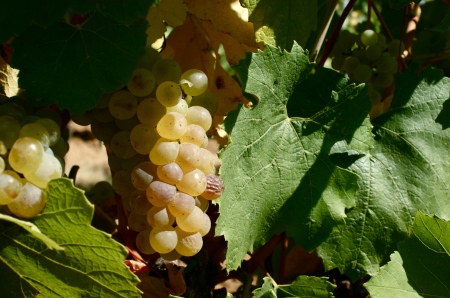
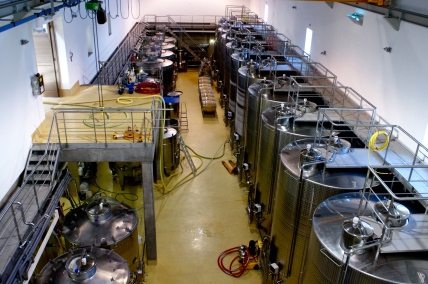
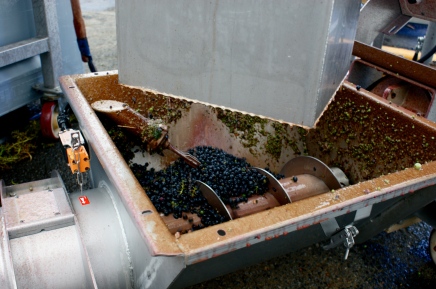
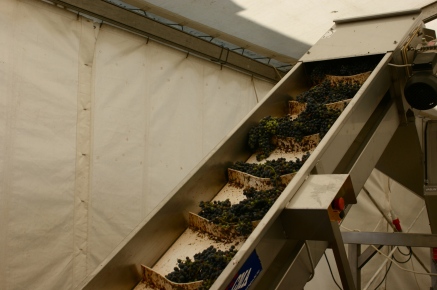
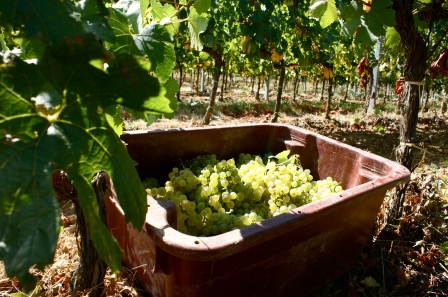
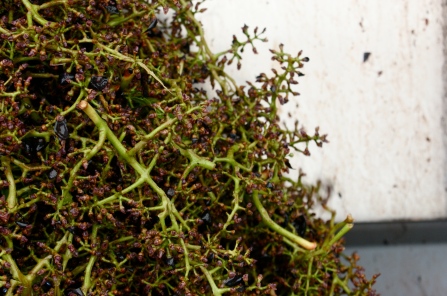
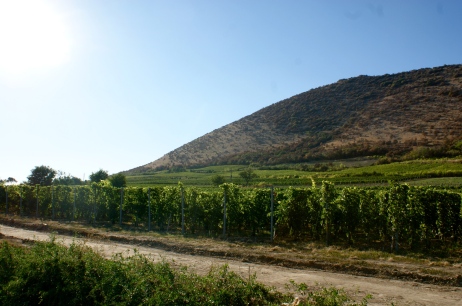
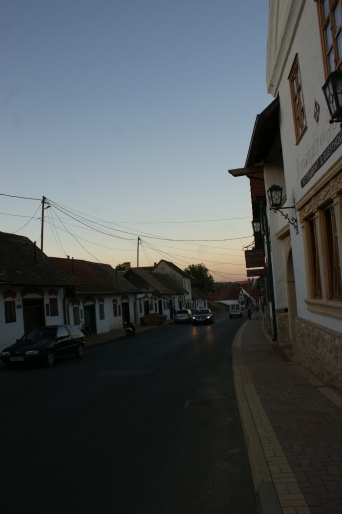
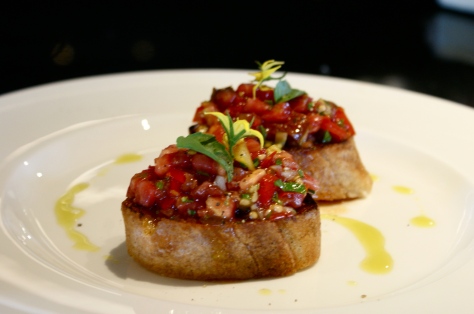
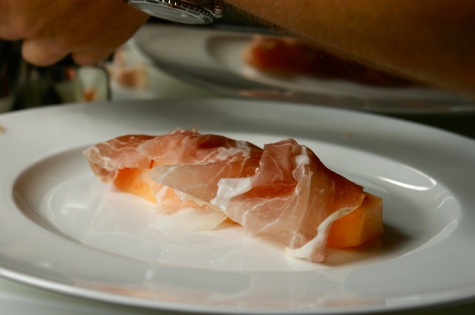
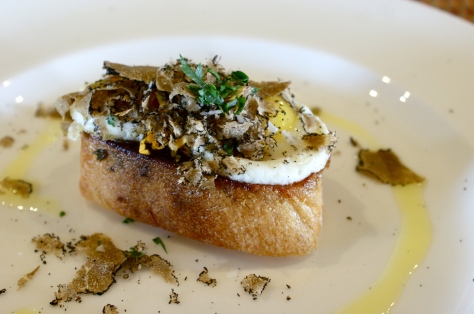
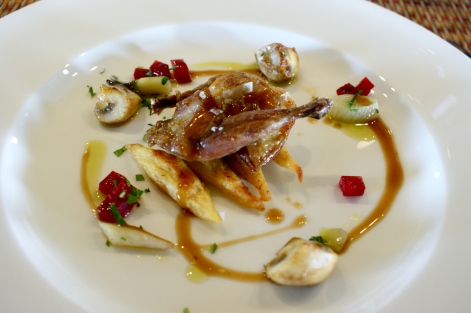
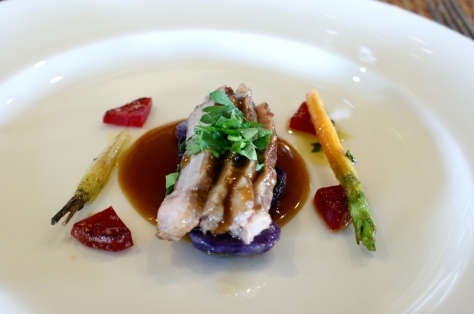
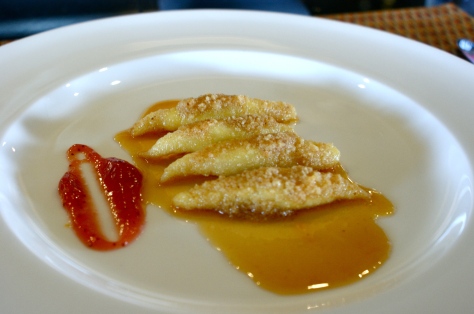
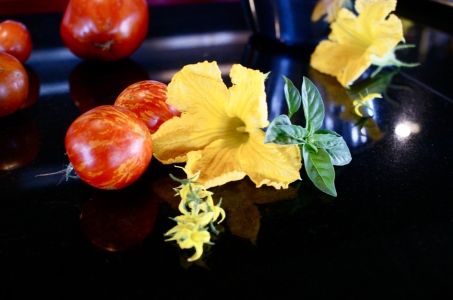
This is very interesting, You are a very skilled blogger. I have joined your feed and look forward to seeking more of your great post. Also, I’ve shared your site in my social networks!